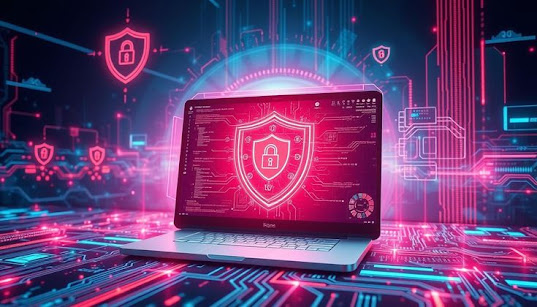Autonomous Vehicle Hacking: Could a Cyber Attack Crash Your Self-Driving Car?
Autonomous Vehicle Hacking: Could a Cyber Attack Crash Your Self-Driving Car?
Self-driving cars are no longer a futuristic dream — they’re already on our roads. With promises of safer streets, fewer accidents, and smarter transportation, autonomous vehicles (AVs) are transforming how we move. But there's a growing concern lurking under the hood: Can hackers take control of these cars?
1. The Rise of Autonomous Vehicles
AVs rely on a web of interconnected technologies — including cameras, LiDAR, GPS, AI-based software, and cloud computing — to make decisions and navigate roads. These systems communicate continuously with one another, with the car's internal computers, and sometimes with the external environment through Vehicle-to-Everything (V2X) communication.
The more connected a vehicle becomes, the more vulnerable it is to cyber threats.
2. Real-Life Incidents: Not Just Science Fiction
You might think vehicle hacking is a thing of sci-fi movies. But it's already happened. In 2015, two cybersecurity researchers remotely hacked a Jeep Cherokee while it was on a highway, taking control of the steering, brakes, and dashboard systems. They exploited a flaw in the car’s infotainment system — a vulnerability that Fiat Chrysler had to fix by recalling 1.4 million vehicles.
And that was a semi-autonomous vehicle. Imagine what could happen with a fully self-driving car that lacks a human driver ready to take over.
3. How Hackers Can Attack an Autonomous Vehicle
There are many points of entry for cybercriminals. Here are some of the most concerning:
- Sensor Spoofing: Hackers can fool the car’s vision by sending fake data to cameras, LiDAR, or radar sensors.
- Software Exploits: Bugs or weak points in the vehicle’s code can allow unauthorized access.
- Communication Attacks: Interfering with V2X communication can confuse or misdirect the vehicle.
- Cloud Hijacking: If the car relies on remote servers for navigation or updates, hackers could take control by breaching the cloud.
In short, if a hacker gains access to a car’s internal systems, they could control it just like a video game — but with real-world consequences.
4. What Could Go Wrong? The Impact of a Successful Hack
The consequences of a compromised autonomous vehicle can be severe:
- Accidents or Collisions: Hackers could crash the car into other vehicles, pedestrians, or infrastructure.
- Privacy Breaches: Many AVs collect personal data, such as travel patterns, biometric data, and conversations. A breach could expose this sensitive info.
- Fleet Sabotage: In ride-sharing or delivery services, a hacker could disable or redirect an entire fleet.
- Terrorist Attacks: Malicious actors could weaponize autonomous vehicles as remote-controlled attack machines.
The danger is real — and growing as the technology becomes more widespread.
5. Who’s Responsible for Protecting AVs?
There’s a shared responsibility among:
- Automakers – must design vehicles with built-in cybersecurity measures.
- Software Developers – must patch vulnerabilities quickly and build secure code from the start.
- Governments – need to create regulations and testing frameworks.
- Users – should stay informed, install updates, and follow safe digital practices.
Cybersecurity in autonomous vehicles isn’t just a technical issue — it’s a safety issue.
6. The Role of AI: Friend or Foe?
AI is what powers autonomous driving, but it's also a potential vulnerability. Hackers can exploit machine learning systems using techniques like:
- Adversarial Inputs: Small changes to road signs (like stickers) can trick AI into misreading signs.
- Deepfake Navigation: Fake GPS signals or voice commands could mislead the system.
On the other hand, AI can also be used to defend against these attacks — by detecting anomalies in driving behavior or spotting spoofed data in real time.
7. How the Industry is Responding
Fortunately, there’s progress. Automakers and cybersecurity firms are investing heavily in defense strategies, including:
- Intrusion Detection Systems (IDS): Monitor vehicle networks for signs of compromise.
- Secure Over-the-Air (OTA) Updates: Keep vehicle software patched without visiting a dealership.
- Encryption: Protects the integrity of data being transferred within and outside the car.
Regulations are also emerging. In the U.S., the National Highway Traffic Safety Administration (NHTSA) has issued guidelines on AV cybersecurity. Globally, the UN has adopted cybersecurity regulations under UNECE WP.29.
Still, there’s a long way to go before we can call these cars fully secure.
8. What Can You Do as a Consumer?
Even though most AV cybersecurity work happens behind the scenes, consumers still play a role. Here’s how:
- Stay Updated: Always install the latest software updates for your vehicle.
- Limit App Permissions: Be careful what apps or devices you connect to your car’s system.
- Use Strong Passwords: If your car or app requires login credentials, use strong, unique passwords.
- Be Aware of Unusual Behavior: Sudden changes in driving patterns or alerts could signal an attack.
Awareness is your first line of defense.
9. Looking Ahead: A Safe Autonomous Future?
There’s no doubt that autonomous vehicles will be a major part of our future. But they must be built on a foundation of strong, proactive cybersecurity. This means more than just protecting against hackers — it means building trust.
Trust that your car won’t be turned into a weapon. Trust that your data is safe. Trust that your life is in good hands — or circuits.
The path forward requires cooperation across industries, innovation in cybersecurity, and education for consumers. If we get it right, the roads of the future could be safer, smarter, and more secure than ever.
Final Thoughts
Autonomous vehicles are amazing. But as with all powerful technology, they come with risks. Cyber attacks on self-driving cars are not only possible — they’re inevitable unless we act now.
It’s time we took vehicle cybersecurity as seriously as we take crash tests and seatbelts. Because in the digital age, a single line of code could make all the difference between safety and disaster.





Comments
Post a Comment